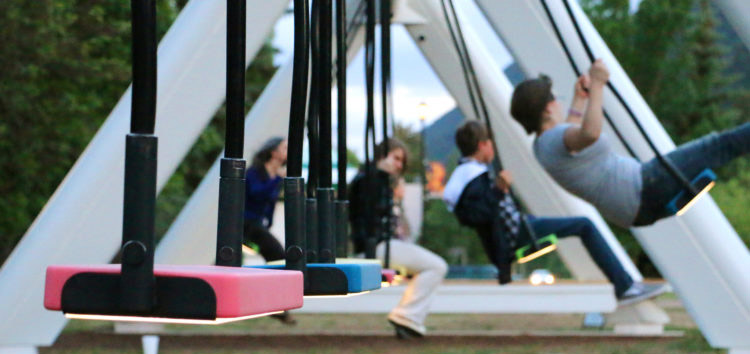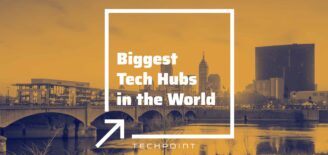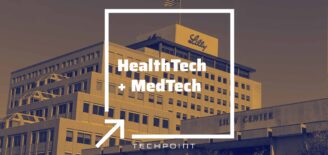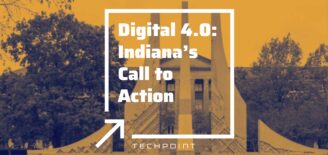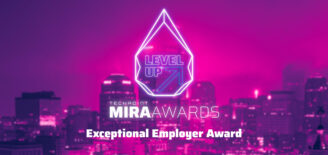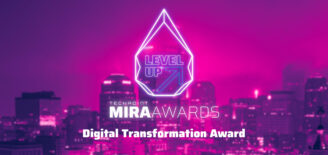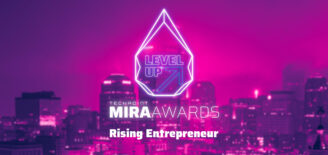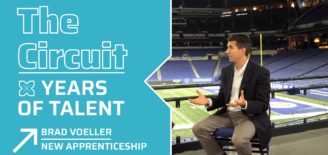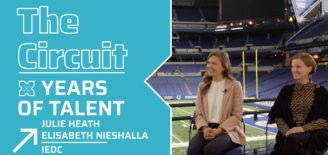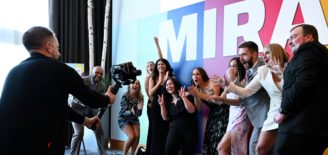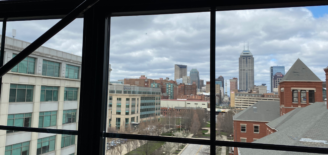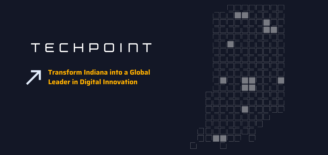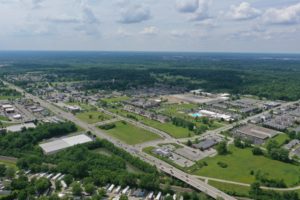How placemaking helped Fort Ben reinvent itself without losing itself
Indianapolis has long attracted technology companies to its central core, but several areas of concentration have emerged in nearby neighborhoods and communities. Since the closure of the Fort Benjamin Harrison military post just 14 miles northeast of downtown Indianapolis in the 1990s, Fort Ben has been organically attracting technology firms to its burgeoning campus.
Now home to nearly 30 technology firms within a half-mile radius, employers and employees have cited the cultural assets, historic architecture, walkability, proximity to a state park and greenspaces, easy commute, and placemaking efforts as primary reasons for locating at the Fort.
We asked the 2020 Mira Awards “Rising Tech City” winner to detail how its intentional and inclusive placemaking contributed to its success.
WHAT IS PLACEMAKING?
While the concept of placemaking has been relatively commonplace since the 1960s in city planning and community development, I was encouraged to hear it mentioned in the local tech community. I tend to simplify the definition of placemaking as good planning. Good planning takes urban design from behind the walls of government or for-profit offices directly to the people.
Placemaking as a verb has evolved into a somewhat abstract, loaded catch-all for many people in the creative and development communities. It is a more robust way of engaging public design and development processes to create and preserve unique spaces that are authentic to an area.
A few of the placemaking principles that ensure the Fort Ben campus in Lawrence, Indiana, remain a unique place to live, work, recreate, and invest:
History and Authenticity
There is an interesting conversation happening in the planning and community development realms about whether or not a place has to be “made” or “saved.” Instead, placemaking efforts should strive to cultivate the art and culture that exist in a neighborhood rather than trying to “create a place” by infusing artificial culture.
Preservation is a significant component of our efforts. While a few were lost to time, the campus remains an excellent example of military facility planning from the early 20th century. Its military significance and Colonial Revival architecture were recognized in 1995 with the district’s addition to the National Register of Historic Places, encompassing 3,400 acres, 75 buildings, military parade grounds, gazebos and hundreds of old-growth trees.
In addition to what was inherited from the military, a group of volunteers began to identify and map additional placemaking assets in 2018. This was our first step in identifying opportunities to expand upon cultural offerings and create wayfinding signage that encourages visitors to explore more of the campus during their trip to the local YMCA, Ivy Tech Community College or state park.
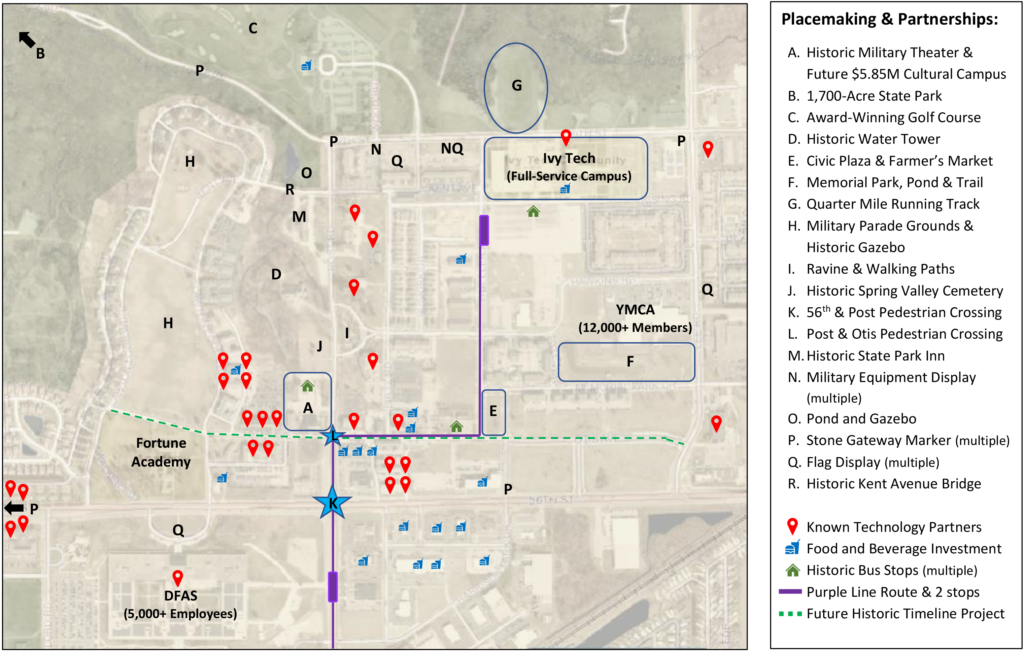
Experiences and Art
One of the most important things you can do to connect a person to a place is to create positive memories. Thousands of Hoosiers and travelers know Fort Ben for the beautiful 1,700-acre Fort Harrison State Park and the memories they have of hiking, picnicking or horseback riding.
In addition to a rich history and large state park, the Fort offers a military museum, historic theater, award-winning golf course, and multiple recreation areas, auditoriums, and event spaces that are open to the public. Numerous dining opportunities are nestled in military barracks, mule barns and a historic blacksmith shop. There is also a regularly occurring farmers market and popular concert series held in the summer.
With a generous donation by the Lilly Endowment, construction has begun on a new cultural campus near the theater, including the relocation and repurposing of a WWII Communications building into a Visual Arts Center. At a total public-private investment of more than $6 million planned in the next few years, these projects will provide significant amenities for the people who live and work at the Fort, while creating public space that encourages additional visitors to discover the campus.
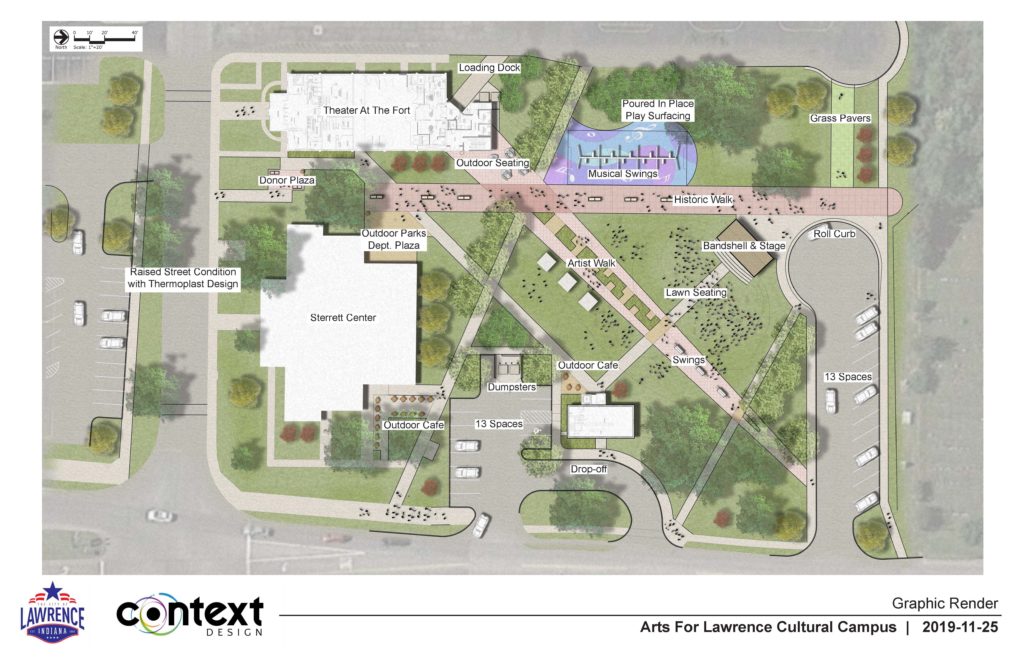
Partnerships and Investment
It took many people, businesses and organizations to preserve, plan and create this unique campus. While plans are always living, breathing documents that have to consider new opportunities and challenges, the 1996 Master Reuse Plan and a more targeted 2006 Lawrence Village Master Plan were adopted based on extensive public input and still guide redevelopment efforts.
The Fort Ben Placemaking Council was recently launched to increase participation and representation. Volunteer members of the multi-disciplinary coalition of elected leaders, the school corporation, local nonprofit organizations, residents and the tech sector strive to maintain focus on opportunities for equitable creative arts and placemaking on campus.
People Make the Difference
One strategy that has gained significant steam in the past decade is the concept of Lighter, Quicker, Cheaper projects. This can take the form of creating momentum and buy-in by biting off smaller portions of a project that add up over time and add up to a massive change. Organizers may begin with a temporary, low-cost and scalable version of a larger project to test the project’s feasibility and potential challenges.
Arts for Lawrence, a local nonprofit, recently had great success utilizing a temporary, interactive art installation known as the Musical Swings to capture this information. This traveling piece encourages multi-generational engagement and dialogue across social classes by requiring strangers to work together to swing in unison to create one of several musical compositions. It also offered an excellent opportunity to collect input and surveys from visitors about what they would like to see on campus.
HOW DOES THIS TRANSLATE TO THE TECH SECTOR?
For more than a decade, we have known that jobs are now following the workforce, and people want to be where they feel safe, included, and energized. Communities and places like Fort Ben do everything within their power to create attractive, walkable campuses, but I urge companies to also follow some of the same placemaking tenets when building or renovating their spaces. The number one thing to remember is to engage employees throughout the process.
If you bring in a branding or interior design specialist, require that they involve a committee of employees who will be using the space. Does your staff really want an open concept space because it is on-trend? Or would they prefer a hybrid model with plenty of cozy nooks and soundproof phone booths to hold important sales calls? Like our trees, plazas, and public art, everything from the lighting, paint colors, and company logo swag worn by your employees contributes to a company’s culture and sense of place.
Placemaking efforts should be collaborative and serve people of all ages, abilities and socio-economic backgrounds. To create long-lasting ties to a project or community, we should also create opportunities for engagement at each stage of the process, through concept, creation and maintenance.
With the removal of the fences and guards that once surrounded the former military base, 25 years of preservation and strategic investment in infrastructure, and the ongoing commitment of many partners, the vision of Fort Ben as a new mixed-use city center is almost realized. All but two of the original buildings have been put to reuse, hundreds of acres have been redeveloped and approximately 20 acres of shovel-ready parcels await the right partners and investors, who understand and share our intent to grow this walkable, mixed-use campus into a city center of which our businesses and residents can be proud.

